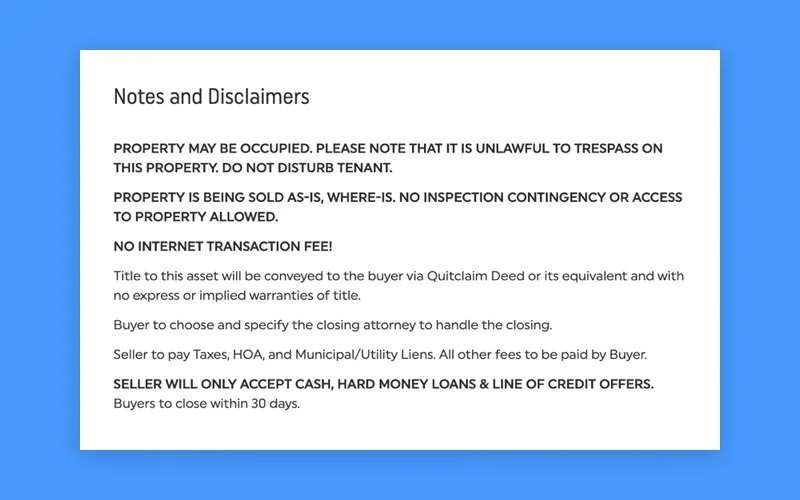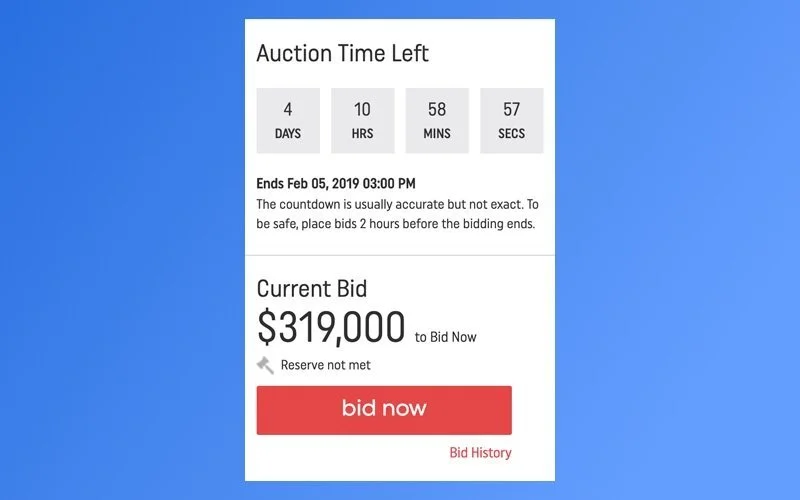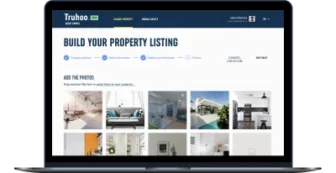
How to build an auction platform for real estate
The first mentions of live auctions date to the fifth century BC. Since then, the process of taking bids to buy or sell goods and services has been transformed a number of times. It was entirely reborn in the 17th century, when so-called candle auctions were initiated by Englishmen who wanted to sell and buy goods and leaseholds. During these auctions, people could continue bidding literally until the candle went out. This helped to make bidding fair, as nobody knew whose was going to be the final bid.
Modern auctions take place both offline and online, allowing participants to bid on pieces of art, clothing, home appliances, cars, and real estate. The latter is the subject of this article, in which you will learn how real estate auctions work and get a step-by-step explanation of what it takes to create a bidding platform. At the same time, if you’re considering adding auction functionality to your existing real estate platform, this article is also for you.
Types of real estate auctions
There are three types of real estate auctions:
- Minimum bid auction, where the seller can set a minimum reserve price on a property and buyers bid starting from the reserve
- Absolute auction, where no reserve exists and the property is sold to the highest bidder
- Reserve auction, where a minimum bid is not disclosed and the seller reserves the right to accept or reject the highest bid within a specified period of time
Most online real estate auctions have a minimum opening bid.
Examples of the best property auctions
Bidding for real estate is a good chance to get an apartment/flat, house, or other property at a reasonable price. Modern online auction software helps both investors and ordinary buyers get quick bargains on bank-owned, short-sale, or foreclosed properties.
Auction.com. Investopedia names Auction.com the best real estate auction for 2022 and reports that to date, the platform counts 6.1 million registered buyers and has reached $51 billion in sales. Operating in all 50 states, Auction.com is recognized for connecting buyers with desired properties and helping them successfully close deals in a little over a month.
Xome is another popular platform that offers a range of auction services including bank-owned foreclosure auctions. Xome accounts for more than 100,000 properties sold and a total of $16 billion in deals closed.
Williams & Williams is another popular real estate auction marketplace. In the last 10 years, properties worth a total of $10 billion have been sold on this bidding platform. Operating in the US, Puerto Rico, Central America, and Europe, Williams & Williams has clients among Fortune 500 companies, government entities, financial institutions, broker partners, and private sellers.
RealtyBid is known for automated bidding, which allows users to continue bidding when they are away from the computer. This auction website has over 20 years of experience helping its users sell and buy properties.
Foreclosure.com is a real estate bidding system that offers homebuyers a number of low-priced distressed deals including government foreclosures, bank-owned homes, pre-foreclosure listings, and real estate owned (REO) properties. A database of foreclosure listings updated daily and a smart navigation system make this service loved by its US audience.
Despite the variety of real estate solutions on the market, there’s still a lot of room in the online auction space. Let’s figure out what property auction platforms usually offer.
Types of sales and properties at real estate auctions
As a rule, online auctions offer specific types of real estate objects, including foreclosed, short-sale, bank-owned, flipped, and retail properties. Let’s overview what each of these property types means.
- A foreclosed property is usually a home that was seized and put up for sale by the lender. By selling foreclosed properties, lenders attempt to recover the balance of a loan. Foreclosures involve lenders seizing properties and are typically aimed at finding a favorable option for both the lender and borrower.
- A short-sale refers to a property sale initiated by a homeowner who wants to sell their property for less than the outstanding mortgage. Short sales are beneficial for both the lender and the borrower. In this way, the lender can avoid the expensive and time-consuming process of repossessing property in foreclosure, while the borrower can save their credit and avoid bankruptcy.
- Bank-owned property or real estate-owned (REO) property is the property that was not sold during a foreclosure sale. Discounted prices make bank-owned properties attractive for real estate investors, and such houses are widely represented on real estate auction platforms as well as bank websites.
- Flipped properties are investor-owned homes that are ready for sale after renovations. Such houses are remodeled and upgraded to bring profit to real estate investors and are popular among first-time real estate buyers.
- Retail property sales are popular among investors and business owners who aim to acquire or expand their portfolios. Such property types include real estate used as stores, shopping centers, beauty salons, and other service businesses.

Users of your real estate auction platform
In a nutshell, an auction marketplace connects users who want to sell properties and those who want to buy them. At the same time, the complete list of roles on your real estate auction platform will be more extensive. Below, we describe the types of users your software is likely to attract.
- Sellers are usually homeowners, real estate agents who act on behalf of homeowners, real estate investors, and asset managers in charge of REO sales. Users with any of these roles need to have a license to sell real estate at auction.
- Buyers are people who are looking for houses at a bargain price. These can be real estate investors, individuals who aim to purchase their own property, or brokers and agents representing such individuals.
- An auction platform operator is responsible for the way the platform is organized and functions for sellers and buyers.
Must-have features for your real estate auction platform
As a rule, all users on your real estate auction platform are united by a common aim: to close a deal with the help of your solution. This core action is preceded by a number of other actions like registering, searching for properties, and bidding. Each of these actions, combined with the experience your users get interacting with your auction application, determine the list of essential features to add to your real estate bidding platform.
Registration, login, and user accounts
Being part of basic software functionality, registration and login help you identify users and ensure smooth cooperation among them on your platform.
Regardless of their role, the sign-up process requires users to provide personal information and contact details including name, address and zip code, phone number, and email address. The latter plays an essential role in verification, helps you build a loyalty strategy, and serves as a primary way to communicate important updates. Also, users need the possibility to change or add this information at any time for their convenience.
As a rule, real estate investors and agents as well as asset managers will need to provide their title, company name, and a real estate license number.
Buyers usually provide their payment information (credit or debit card details, shipping address, etc.). This information will be used to pay for your platform services. For you as an app developer, this means you need to consider integrating a payment gateway into your real estate platform.
Property listings
Another key functionality is listing properties available for sale. Property listings are of major interest to buyers. At the same time, listings are usually provided by sellers, which means sellers need to be able to:
- Add a property by creating a new property listing. Placing listings may be paid or free. For instance, placing a property on RealtyBid costs sellers $150. This payment is charged to a seller’s bank card once a property is listed and is non-refundable.
- Choose a bid duration, which is the period of time during which the property listed receives bids. This period also includes pre-auction, staging, and post-bidding time.
- Modify a property listing to adjust information about the property as required.
- Re-offer the property in case the auction was won unfairly. In this case, another round of bidding is initiated.
Listing real estate objects also involves providing details about each property. Here are the most common types of information about properties provided on real estate auction platforms.
- A description includes the property size, number of bedrooms and bathrooms, modern amenities, parking on premises, etc.
- Photos. We’ve already described the importance of quality images for online real estate businesses in another article. If you’re interested in the requirements for photos, we recommend reading that article.
- 3D tours. 3D technology allows buyers to take virtual home tours. This provides the opportunity to explore the layout, size, and interior design of a home without physically visiting it. Thanks to 3D tours, a number of bidders can view the same property simultaneously without scheduling and negotiating with the owner, avoiding any haste.
- Notes and disclaimers that explain the legal rights and obligations that concern each property. For example, notes and disclaimers can include whether a property is currently occupied and payment conditions.

- Current and starting bid. The current bid is the bid amount for an auction that is already in progress, while a starting bid or an opening bid is the lowest acceptable bid for an auction that hasn’t started yet.
- Auction time left indicates the date when an auction starts or points to the time left before an auction ends.

Additional details may include bid history, associated fees, property disclosures, contacts of the auction customer service, or whatever information your customers may find useful.
Read also: Our UI/UX Design Framework
Search
Users of your real estate auction platform will extensively use its search capabilities. Sellers may want to compare options for bidding before listing their properties, while buyers will need to monitor and analyze real estate that may potentially satisfy their requirements. To make search easy and effective, it should offer the following options:
Filters. Filtering is key to help users find content that matches their needs. To create a smooth user experience, filters should be visible not just when a user starts searching but every time a user wants to change or adjust their search preferences. As a rule, when searching for houses on a real estate auction, users expect to choose properties by location, price range, property type (bank-owned, foreclosed, short sale), and so on.
Sorting allows buyers to group properties in ascending or descending order depending on:
- Price
- Auction dates
- Auction time remaining
- Property size
- Property views
- Date added
Saved properties. Adding recently searched properties and search parameters to favorites is another useful option to add to your bidding platform. Making recent searches easily available for users can help them save time and create an enjoyable user experience. Based on items saved, you can also create property listing recommendations for your platform users.
Map. Many auction users search properties by location, which is why adding a map to the search page of your online auction software is a good idea. This makes it possible to manually enter a location or zoom the chosen search area to narrow down options.
Bidding
The majority of auction marketplaces take a 5 or 10 percent deposit before providing buyers with a chance to bid on a property. After the auction, the auctioneer needs to ask the bank that issued the bidder’s card to remove this hold. Some real estate auction platforms don’t require any fees for registering or bidding, as they earn money from charging listing agents and winning bidders. An example of such a bidding system is RealtyBid.
As real estate auctions happen in real time, their participants have the opportunity to bid 24 hours a day. This means they usually start with a minimum price and continue bidding until a single bidder remains. Once the winning bidder is chosen, the auctioneer closes the auction and the property is sold to the winner.
The bidding function allows buyers to check and track details about a property listing. Some such details include:
- the opening bid
- the number of bids and participating bidders
- vendor bids (bids made on behalf of the seller to keep the bid active)
When a potential buyer is ready to place a bid, they normally do that directly from the property’s page by clicking a place bid button. Such an action requires a bidder to log in to the bidding system. Once the bidder has logged in, they can either place a starting bid or set a maximum bid amount at once.
On average, a deal is closed within 30 to 60 days, and until then bidding is active. Next, the winner must pay for the property exactly as it is required by the terms of the contract of sale. After that does the property officially belong to its new owner.
To make bidding on your real estate platform easy and smooth, make sure to implement the functionality suggested below.
Bidding process automation allows bidders to remain active even when they’re away from their computer. To automate bidding on your website, we suggest implementing a proxy bidding system. This type of software automatically places a bid on behalf of a buyer and allows them to win an auction even if they’re not placing higher bids in real time.
Countdown timer. A bidding countdown is needed to award the property to the bidder who is the last to place a bid before the time runs out. If another auction participant manages to place a bid during the last seconds of the countdown, the clock is reset and the countdown remains active. If no bids are placed within the time allocated for bidding, the property goes to the one who placed the winning deal.
Buy it now functionality allows sellers to set a fixed price for bidders who are ready to instantly purchase the property. This helps confident buyers avoid bidding by paying the seller’s desired price right away.
Apart from the must-have features above, you may wish to add some supplementary functionality.
Auction calendar
A real estate auction calendar informs users on upcoming auctions. This feature also requires implementing filtering and sorting options to let potential buyers group auctions by date, location, property name, and asset type. Auction.com, for example, allows users to register for auctions and view uploaded inventory.

Bidder dashboard
A dashboard contains information about a bidder’s activity. This feature comes in handy for professional real estate sellers, such as agents who act on behalf of investors.
Here is a list of basic functionality that is available via a bidder dashboard:
- Property notification emails are sent automatically to users who sign up. These emails may announce new properties in the selected area, confirm high bids, or inform about outbids. This is an easy way for sellers to send over important documentation and contract questionnaires. As a developer, you need to ensure cybersecurity via end-to-end email encryption.
- Lists of saved properties allow you to make saved searches available and easily accessible for buyers.
- Bid manager. A virtual bidding manager makes it possible for buyers to place and manage bids on chosen properties right from their dashboard.
- Automated reporting functionality provides analytics about bids and bidders via informative charts and graphs.
- Additional information may include data about upcoming auctions that match a specific bidder’s interests and statistics on active bids, activity history, etc.
Ensuring mobility for users
Modern real estate auctions are nothing more than mobile apps that bring together buyers and sellers and allow them to engage in the bidding process in real time. One of the major things your auction users expect from this type of software is mobility. Connecting users and keeping them updated about an ongoing auction in real time becomes possible with the following features:
Messaging allows users to text each other and receive replies right in the app.
Notifications keep users informed about in-app messages received, new listings that appear, upcoming auctions, new properties within the area of interest, and more. We explained how to implement push notifications in your app in one of our previous articles.
Location awareness makes it possible for users to search by their current location, by typing in a specific address, or by drawing a selected area on the map.
Real-time bidding allows users to place bids and check bids placed by others in real time.
Sharing properties via text messages, messenger apps, email, and social media is another component that helps platform users achieve mobility and ensure smooth user interactions.
Security basics for your auction platform
Keeping your users safe from cyber threats is a fundamental aspect of web app development. Besides, it’s a great way to earn user loyalty. Here are four basic ways to ensure security when creating a bidding platform.
- Introduce ID verification and make it part of the registration process. Your system can ask users to provide an ID and credit card information before they place a bid. As an admin, you can reject a registration and terminate bidding to prevent any fraudulent activity.
- Enable real-time auction tracking to let sellers watch how buyers place bids in real time.
- Introduce property ratings. This is a fair way to let buyers understand what they’re bidding on. Just ask sellers and buyers to leave reviews about each other after the deal is closed.
- Create bidder agreements and obligations and include a set of rules about immediate membership termination in case any shill (fake) bidding takes place.
Tech stack for online property auctions
Your choice of tech stack will mostly depend on the specific features you’re going to implement and the direction in which you want to scale your product in the future. To make the right choice, we suggest you work closely with a dedicated software development team.
As a rule, real estate platforms are built using PHP, CSS, HTML, and JavaScript. To display more properties and related content, you need to integrate with listing management systems or syndication platforms like Point2, ListHub, 365 Connect, and RealBird. In any case, when deciding on the technologies to use, make sure you take into account your product’s functionality, complexity, and size.
How to monetize your real estate auction platform
Merely creating a bidding platform will not generate any revenue. A monetization strategy is something you need to start thinking about even before starting your web application development. As a rule, companies like Yalantis assign a dedicated business analyst to help you decide how your app is going to make money.
The majority of bidding platforms charge users for the services provided. Fees usually include:
- Buyer’s premium. This is a common fee from 5 to 10 percent of the final property price that is paid in addition to the hammer price. It is charged by the auctioneer in addition to the seller’s commission, which is a fee that auction houses have historically charged consignors. During an online real estate auction, the winning bidder has from 30 to 40 days to pay the buyer’s premium. If they fail to make this payment, the auction house re-auctions the property.
- Transfer tax is a fee paid for transferring the property title to its new owner. Transfer tax is stated in the sale agreement, which a buyer gets before the deal is closed. The tax is different for every state. In California, for example, it is $0.55 per $500 of the sale price.
- A technology fee is a fee for an auction platform service. It can reach up to $500 and is included in the prices of all properties presented on the platform.
Read also: How to Build a Real Estate Web Platform
How to attract more buyers to your real estate auction platform
At some point in development, you’re likely to face the issue of attracting new buyers. In this part, we share some ideas for doing that by providing financing options and expanding the choice of properties on your real estate auction platform.
Auction financing and bridge loans
To cover the requests of bidders who are interested in financing, you may consider stuffing your platform with financing options. Hudson & Marshall auction, for example, provides financing by JP Morgan Chase, Wells Fargo, and Civic Private Money Lending Company. This way, borrowers can pre-qualify for a loan right in the bidding system.
Another way of getting extra funding is partnering with national lending companies that provide bridge loans. A bridge loan is a short-term loan that’s tailored to auctions. Such companies can negotiate on a swift turnaround of funds during bidding or on completion of the auction to assure funds will be accessible on time. This allows your buyer to get a mortgage or another long-term funding solution that fits their needs.
Providing auction financing right in the bidding system can help turn your visitors into real buyers by giving them all they need to bid in one place.
Ensure choice for buyers
Ensuring a wide range of properties to bid on is another challenge you may face when building an auction marketplace. Here are some tips on providing your bidders with a great choice of real estate.
- Conclude agreements with national banks and mortgage servicers to ensure listings on your platform at reduced prices.
- Ensure your online presence on real estate agent directories such as RedFin, Trulia, and Zillow (who are among our clients). This is a way to attract a part of the traffic these directories get to your real estate auction platform.
- In addition to the MLS integration strategy, which is usually provided on advanced real estate websites to attract visitors to your platform, think of developing a powerful marketing strategy to help you effectively reach your target audience.
Read also: How We Ensure Stability, Performance, and Maintainability of Your IT Solution Under High Load
Final thoughts
Considering the nuances we’ve described in this article, creating a bidding platform requires hard work in addition to strategic thinking and professional knowledge. Keep in mind that outsourced developers can significantly increase the likelihood of auction platform success by providing top-notch online auction software.
At Yalantis, we have expertise creating software for the real estate market. This is proven by our three-year-long collaboration with Truhoo, an all-in-one-real estate platform, and our incredible experience working with Zillow. Our team would be pleased to provide you with full-cycle web application development, native app development, and project support after your product is created. Don’t hesitate to get in touch with us to share your vision. We’ll stand by your idea and help you bring it to life.
Want to explore our real estate software development expertise?
See one of our products
Take me thereRate this article
4.1/5.0
based on 116 reviews









